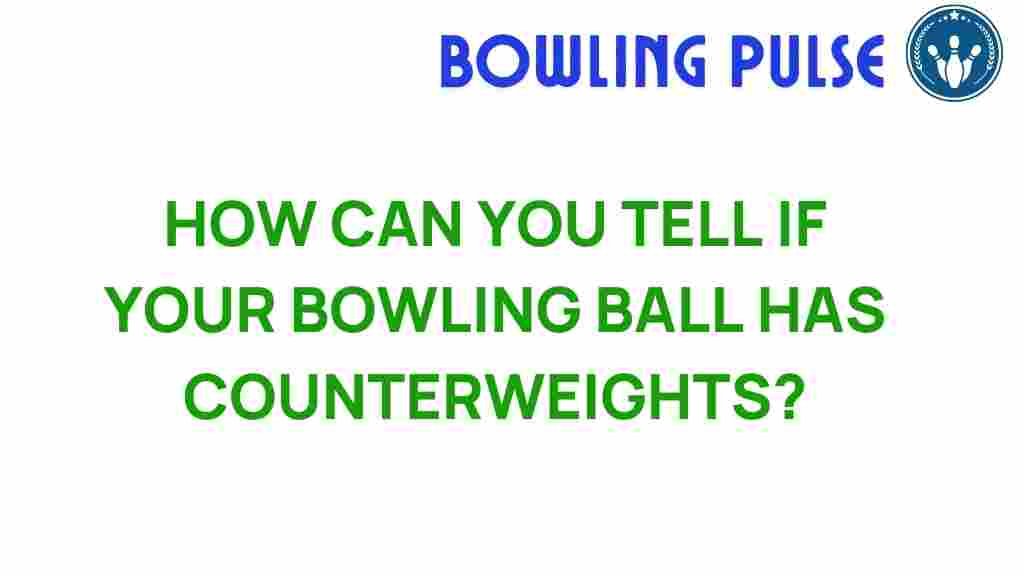Uncovering the Secrets: Do Your Bowling Balls Have Counterweights?
Bowling is a sport that combines skill, precision, and strategy. One of the most critical aspects of bowling is the equipment you use, particularly your bowling balls. Many bowlers may not be aware of the intricate details that contribute to their performance, such as counterweights. In this article, we will delve into the world of bowling balls, focusing on the role of counterweights, how they affect performance, and tips for choosing the right bowling equipment to enhance your game.
What Are Counterweights in Bowling Balls?
Counterweights are additional weights added to specific areas of a bowling ball to affect its balance and dynamics. These weights can significantly influence how the ball behaves during release and its trajectory down the lane. Understanding counterweights is essential for any bowler looking to improve their game.
The Importance of Bowling Ball Dynamics
The dynamics of a bowling ball involve its weight distribution and how it interacts with the lane. Here are some key points about bowling ball dynamics:
- Mass Distribution: The way weight is distributed in a bowling ball affects its spin, roll, and overall motion.
- Performance: Properly weighted bowling balls can improve your performance by allowing for better control and accuracy.
- Game Improvement: Understanding how counterweights work can help you select the right ball for your bowling technique.
How Counterweights Affect Bowling Ball Performance
Counterweights can influence various aspects of bowling ball performance:
- Hook Potential: Adding counterweights can increase the ball’s hook potential, allowing for a sharper turn towards the pocket.
- Stability: Properly placed counterweights can enhance the stability of the ball during its roll, reducing the likelihood of wobbling.
- Pin Action: The right counterweight setup can improve pin action, leading to higher strike rates.
Choosing the Right Bowling Ball with Counterweights
When selecting a bowling ball, several factors must be considered, including weight, grip, and the presence of counterweights. Here’s a step-by-step process to guide you in choosing the right bowling equipment:
- Understand Your Bowling Style: Are you a straight bowler or do you prefer to hook the ball? Your style will determine the type of ball you need.
- Consult a Professional: Visit a pro shop and consult with a knowledgeable staff member. They can help you analyze your game and recommend specific bowling balls with suitable counterweights.
- Test Different Balls: Try out various bowling balls to see how they feel and perform. Pay attention to how the counterweights affect your shots.
- Consider Your Grip: A proper grip is essential. Ensure the finger holes accommodate your hand comfortably, allowing for better control.
- Review Your Performance: Keep track of your scores and analyze your performance with different bowling balls. Adjust your selection based on what works best for you.
Bowling Technique Tips for Enhanced Performance
Improving your bowling technique can go hand-in-hand with selecting the right bowling ball. Here are some tips to enhance your game:
- Focus on Your Approach: A consistent approach sets the foundation for a successful shot. Work on your footwork and timing.
- Release Point: Experiment with your release point to find what works best for your ball dynamics. A good release improves accuracy.
- Follow Through: Your follow-through is crucial. Maintain your form after releasing the ball to ensure a straight path down the lane.
- Practice Regularly: Like any sport, practice is key. Regular bowling sessions will help you refine your technique.
- Seek Professional Coaching: Consider taking lessons from a certified bowling coach for personalized tips and strategies.
Common Troubleshooting Tips for Bowling Balls with Counterweights
Even with the right bowling ball and technique, you may encounter some issues. Here are some troubleshooting tips:
- Ball Not Hooking: If your ball isn’t hooking as expected, check the counterweight placement. It may need adjustment.
- Inconsistent Performance: If you’re experiencing inconsistent results, analyze your release and approach. Minor adjustments can lead to significant improvements.
- Pins Not Falling: If you’re not getting the desired pin action, it may be time to reevaluate your ball choice and consider one with different counterweight dynamics.
Analyzing Your Bowling Game
To continuously improve, it’s essential to analyze your performance regularly. Here are some methods for effective bowling analysis:
- Video Analysis: Record your bowling sessions and review the footage. Pay attention to your technique and identify areas for improvement.
- Use Bowling Software: Consider using bowling analysis software to track your scores and statistics. This can provide insights into your performance trends.
- Set Goals: Establish specific goals for your bowling game. Whether it’s improving your average score or mastering a new technique, having goals helps maintain focus.
Conclusion: Elevate Your Game with the Right Bowling Ball
Understanding the impact of counterweights on your bowling balls can greatly enhance your performance. By choosing the right bowling equipment and honing your bowling technique, you can elevate your game to new heights. Remember, every bowler is unique, so take the time to analyze your style, practice regularly, and seek professional advice when needed. For more information on bowling analysis and techniques, check out this detailed guide.
Whether you’re a beginner or a seasoned player, the right knowledge and equipment can make all the difference. So, do your bowling balls have counterweights? If not, it might be time to explore the possibilities they offer for improved performance on the lanes!
This article is in the category Equipment and created by BowlingPulse Team
